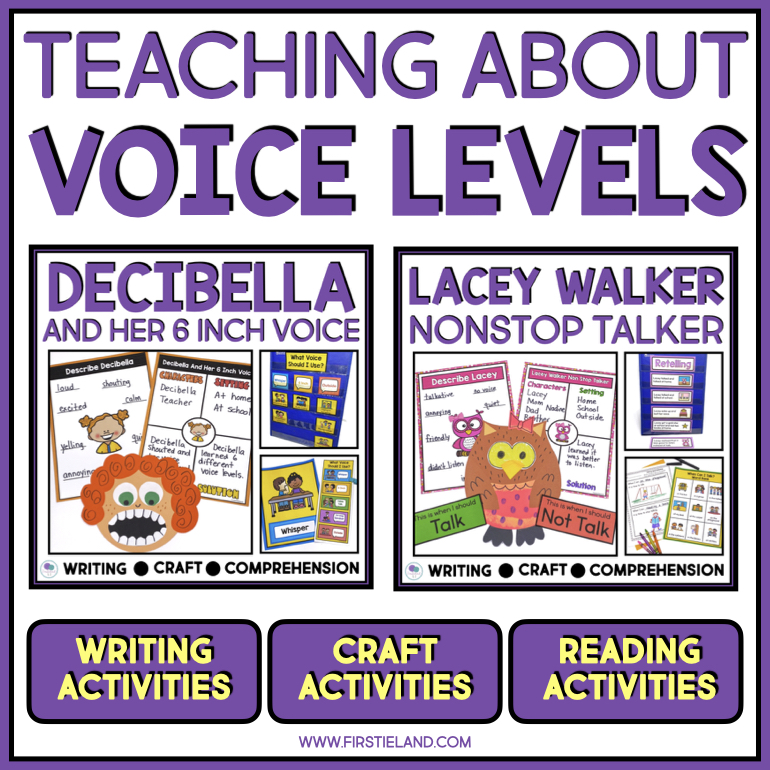
“I have a great class…they just won't stop talking.” “We could get a lot more accomplished if my students would just stop talking.” “My class is so noisy – they talk all the time.” Does any of this sound like you? If student talking is a problem in your classroom, read on. Here are my top tips to help this age-old problem.
Why Won't My Class Stop Talking?
When I first started teaching, I struggled with students talking every year. I would give my students directions for an activity and send them back to their seats. There would be about a minute of silence and then the rumble would begin. First, it was one or two students. A whisper here or there. Then, the whispers became louder and eventually more and more student talking and whispering would begin.
I would tell them to stop talking and get back to work. Or I would give them a “Shhhhh”, and it would get quiet. For about a minute. And then it would begin again. I would tell the class to get quiet – this time in a louder voice.
And so it would go, over and over, until I finally lost it and yelled at the entire class, handed out punishments left and right, and basically felt like I was going to lose my mind over the constant student talking!
Have you been there? Does any of this sound familiar? If it does, you're not alone. One of the biggest complaints I hear from my colleagues all the time is about the non-stop student talking in their classrooms. Here are a few things I've learned over the years:
Silence Is Not Always Golden
Here's the thing: kids need to talk. People need to talk. We talk all the time and it's one of the ways that kids learn. They talk to us and they learn from us. They talk to each other and they learn from each other. So, we need to give students the opportunity to talk to one another during the day. That being said, they don't need to talk non-stop all day long.
Designate Student Talking Times
Since we know kids need to talk, designate certain times of the day as “talking times”. What would this look like in your classroom? How about when they first come into the classroom in the morning?
I like to give my students a “soft start” to the day. After they do their morning chores (handing in their folder, signing in, and using the bathroom) they can come into our room and choose a math tub or something from the fast finisher shelf to play with. They can talk and chat with their friends and it's a nice way to start the day.
They get all the “chattiness” out of their system in that first 30 minutes. When we move to the carpet for our first lesson, they're ready to listen.
Think about when you can have “talking times” in your room – when they first come in, midway through the morning have a 10-minute break, right after lunch or recess, and maybe again at the end of the day. Try to fit these short breaks into your day so kids have some time to chat with each other.
What Is Silence?
Kids don't know what “no talking” means. They really don't. Just like all the other skills that you teach over the year, you have to teach about talking too.
At the beginning of the year, we spend a lot of time learning about when we can and can't talk in school. We have specific lessons regarding our voice levels and how they should sound in school. The students learn when we can whisper, talk or even yell with the book Decibella And Her Six Inch Voice.

It's also necessary to teach students that there are different times when we can and cannot talk in school. Students don't come into your classroom knowing when it's ok to talk. You have to teach this to them. One of my favorite books to use for this lesson is Lacey Walker Non-Stop Talker. This is a super cute book about a little owl who never stops talking….until one day when she loses her voice. She soon finds out that there are times to talk, but sometimes it is good to listen too!

After we read the story we create a story elements chart with the characters, setting, problem, and solution. Then we take some time to focus on the main character of Lacey Walker and discuss her traits. We also review some of the new vocabulary in the story.

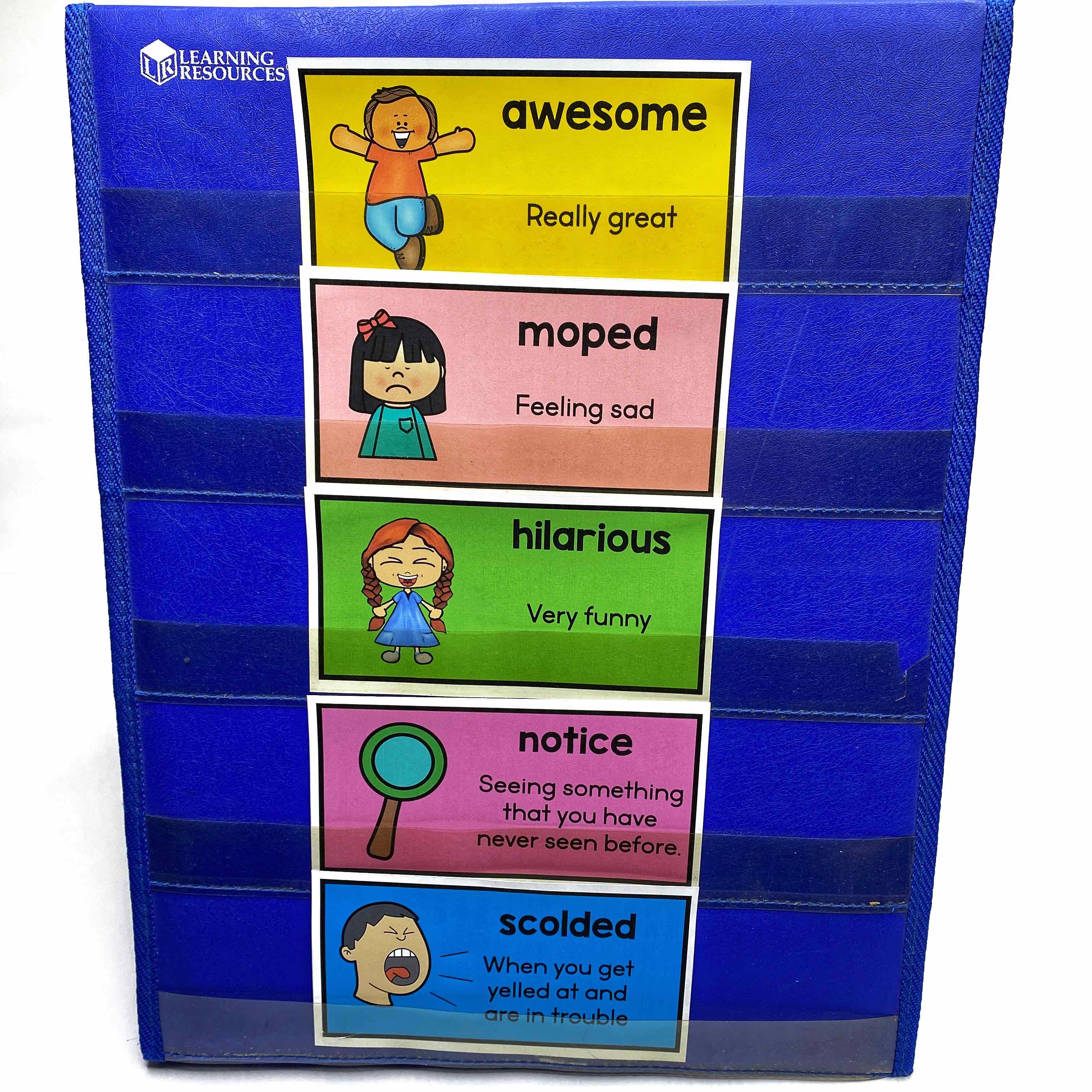
Next, we discuss the times we can talk in school and when there should be no talking. We do this pocket chart sort with pictures of different school activities and places. Each child gets to help with this activity.
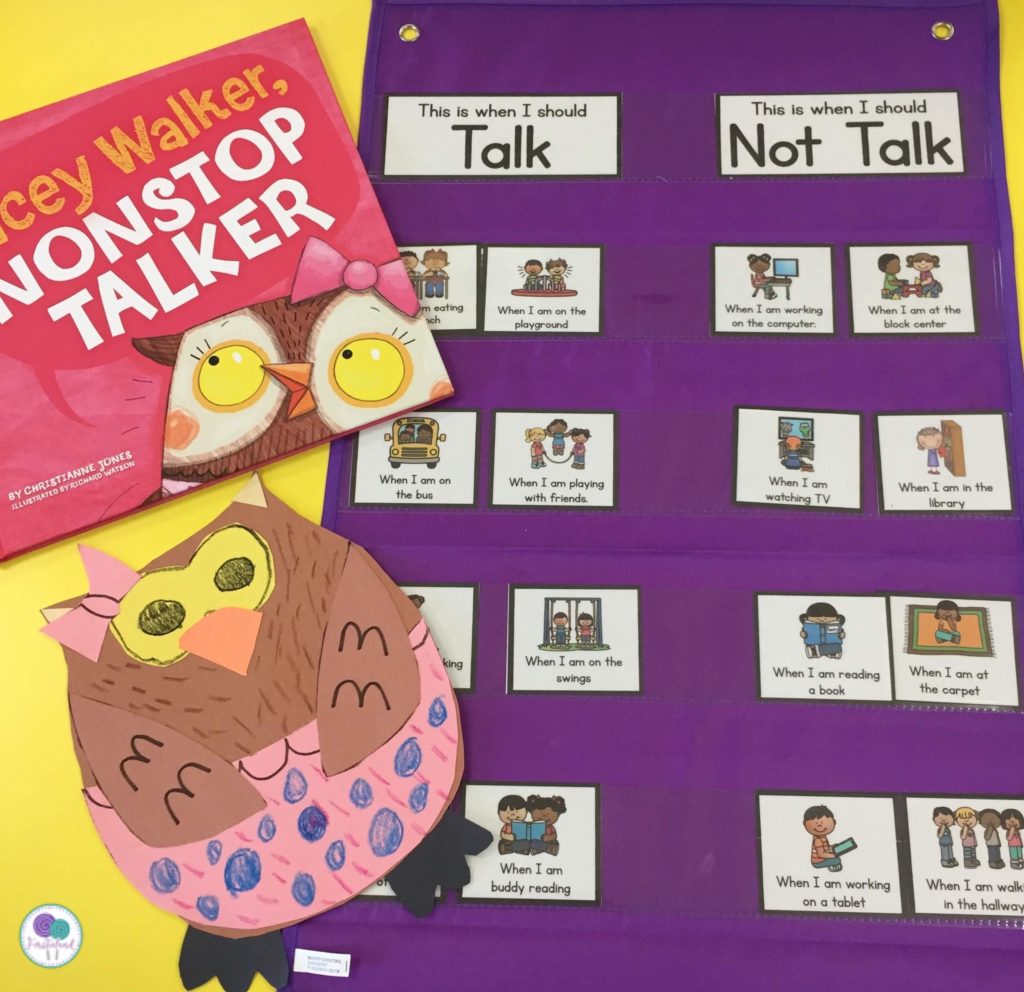
When we're finished with the sort, the students go back to their seats and do this writing activity. They draw and write about a time they can talk and cannot talk in school. Simple activities like this are great for teaching students your expectations with talking in the classroom.

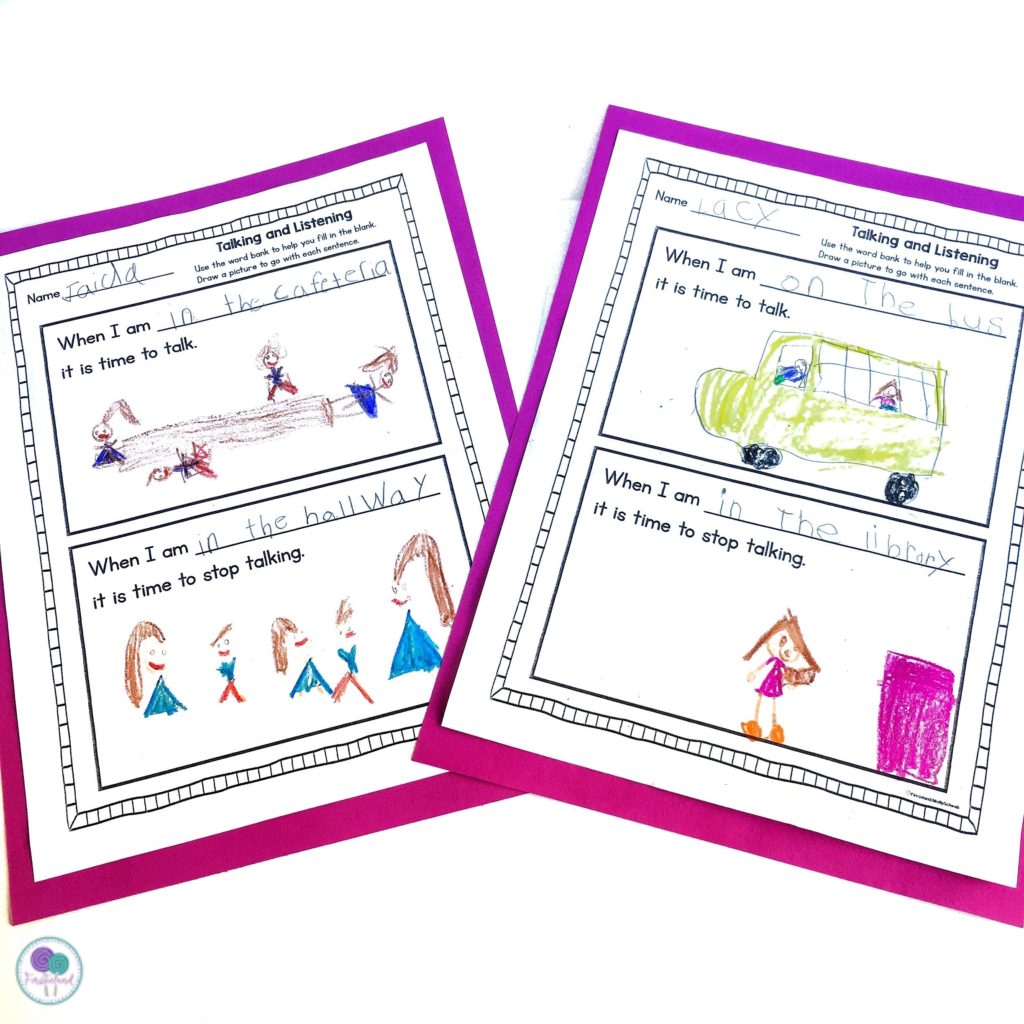
We finish the lesson with this cute Lacey Walker craft. She always turns out adorable!
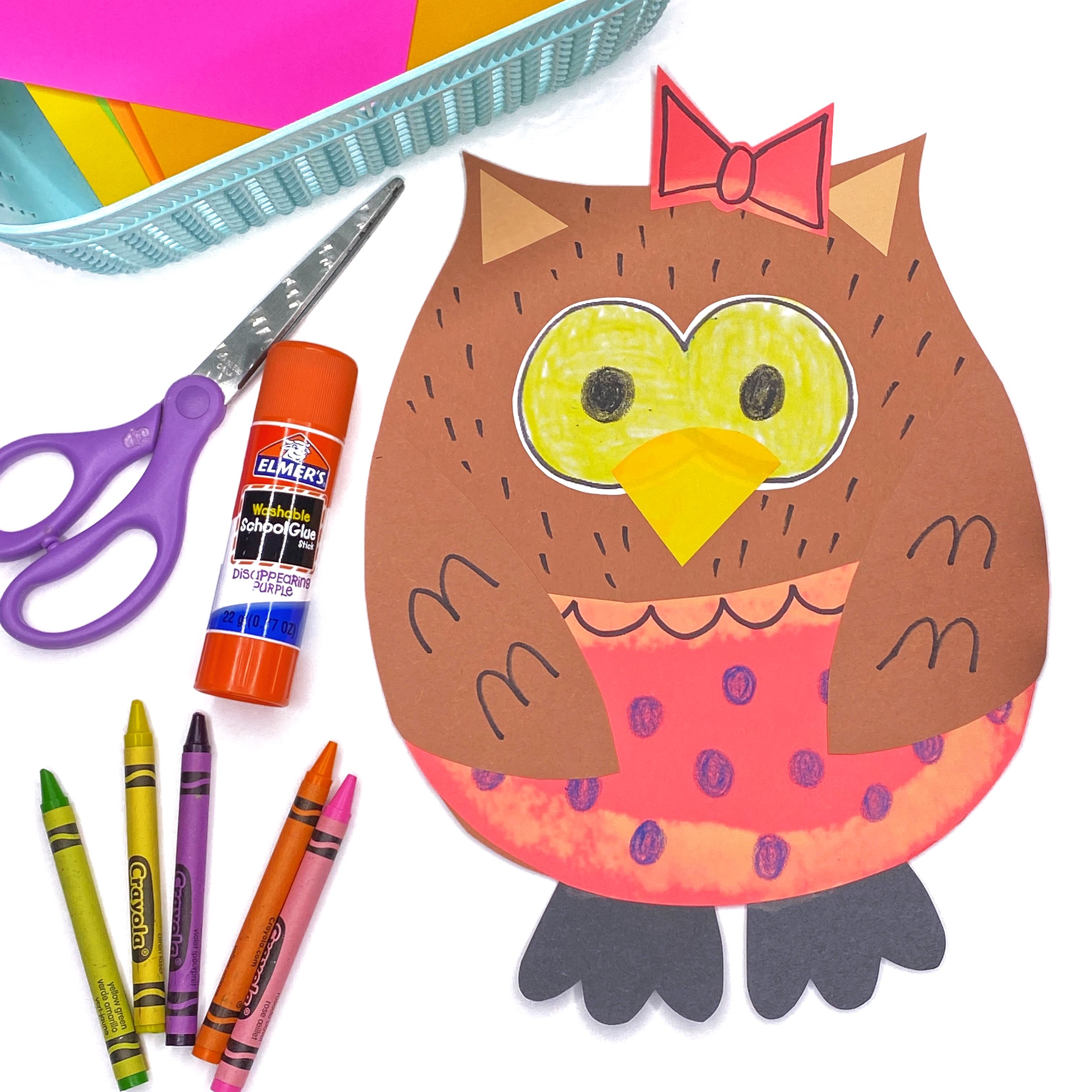
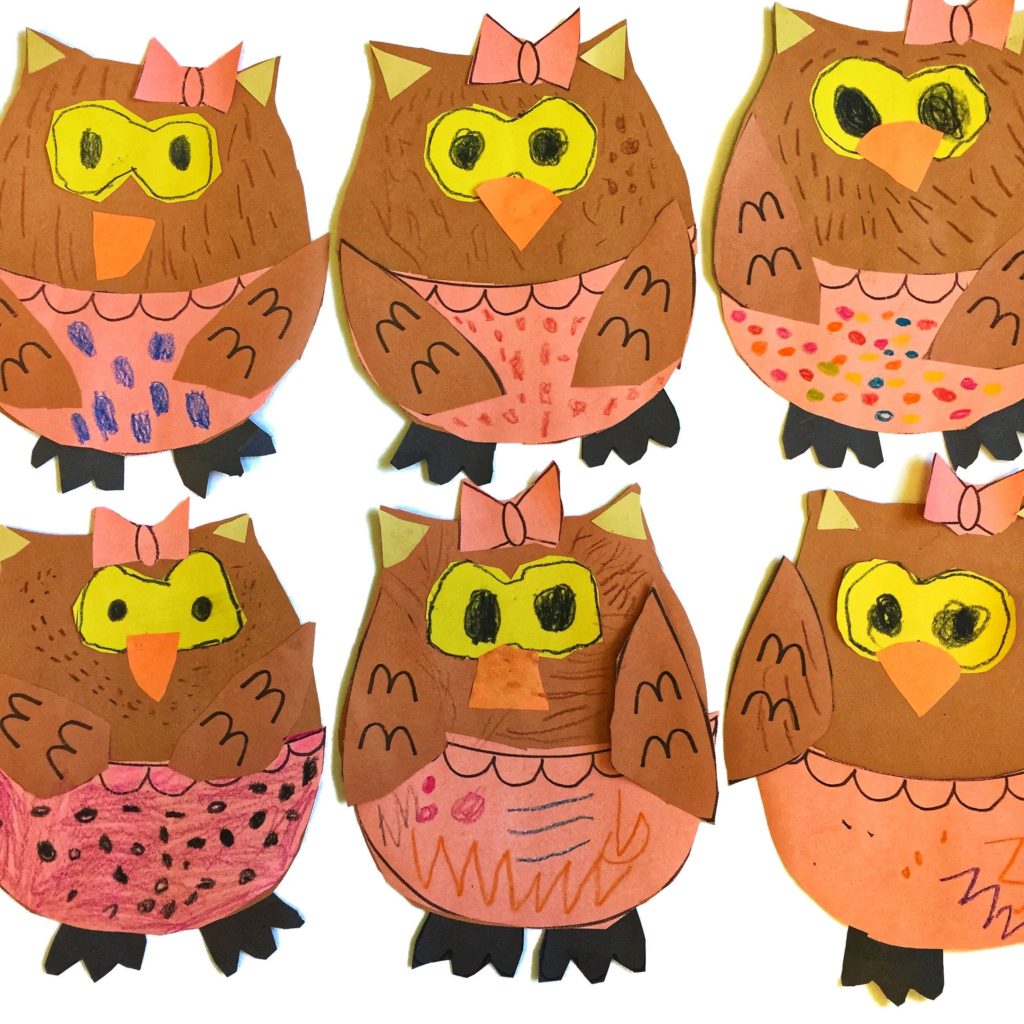
Set A Quiet Timer
Giving students a visual reminder of when they will be able to talk is very helpful. I've used kitchen timers and egg timers in my classroom to show students how long they have to complete an activity. They also know that during this time the room should be silent or no talking.
One of my favorite things to use are these free online timers. I project one of these timers on my board and tell the students they must work with no talking until the timer goes off. Not only do they stay silent, but it's a great incentive to complete their work quickly and on time!

Play Calming Music
Another technique that works well is playing some calming music during work time. Calming music should be instrumental and not too loud. It should be just loud enough for the students to hear but not blaring. YouTube has some great free music with visuals like outdoor scenes and waterfalls. My kids love when I pull up the fireplace and we work in front of the crackling flames. You can listen to some of my favorites here.

Use Hand Signals
There are times when a student has to say something during quiet work time. Maybe they have to use the restroom or they have a broken pencil. Teaching your students what to do during these times will cut down on blurting out and interrupting your quiet work time or a lesson at the carpet.
I like to teach my students hand signals at the beginning of the year for the following:
- I need to use the restroom – hand up with 2 fingers crossed
- I need to sharpen my pencil – peace sign
- I need to get a tissue – hand up with 4 fingers
I'm Done….Now What?
I have found that most of the talking begins when students finish their work and they have nothing to do. So, give them something to do! In our classroom, we have a shelf of “desserts”. When you are finished with your work, you may get dessert.
I have little busy bags with simple activities that students can complete or play with quietly on their own. They can use these activities while they wait for the other students to complete their work. Giving my students something to keep them busy and occupied cuts down on unwanted talking in my classroom.
I picked up some items from Dollar Tree to make our busy bags. Some of the bags have little puzzles, legos, play dough, small blocks, and other quiet toys.

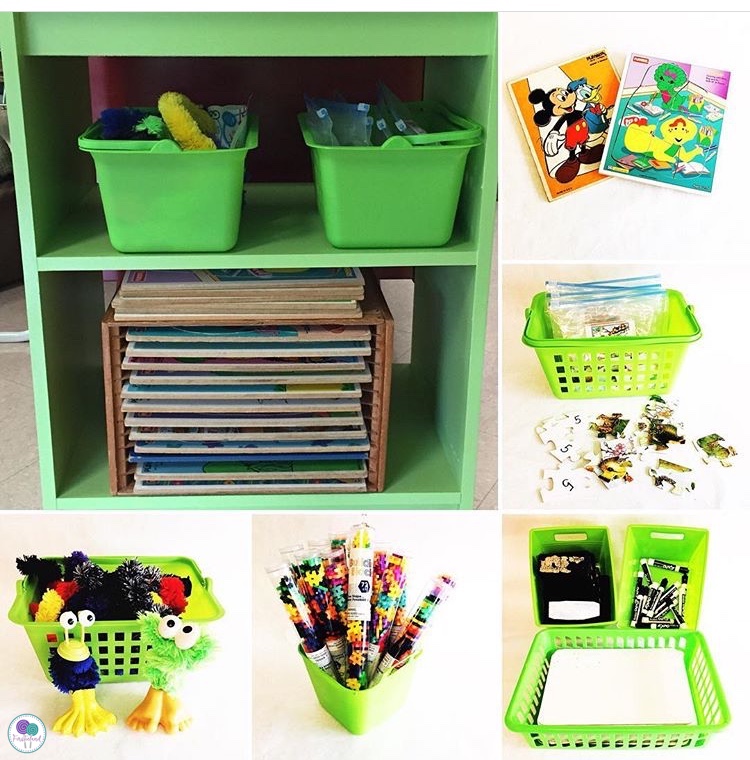
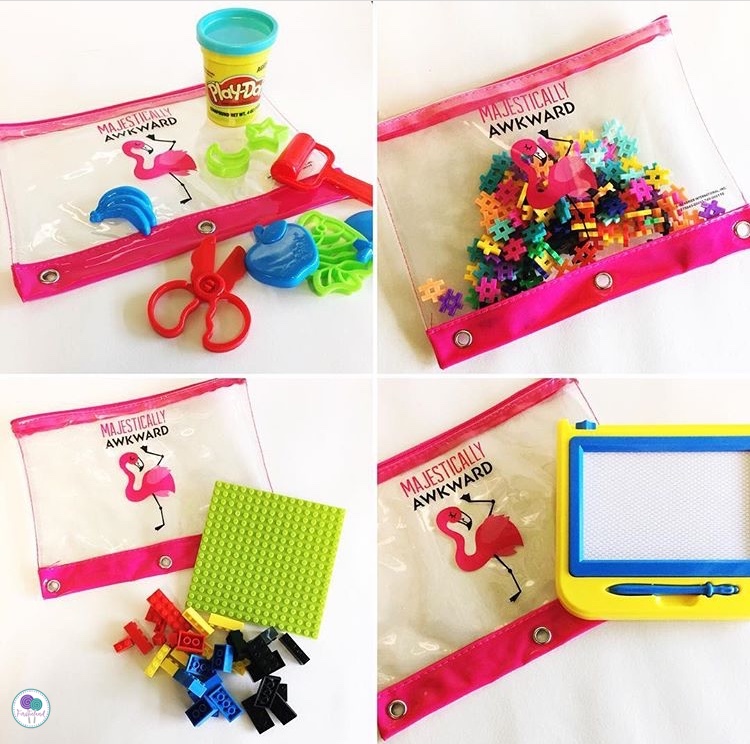
Lessons on appropriate times to talk are important at the beginning of the school year. These lessons on talking, voice level and blurting out are what set the tone for the entire year in your room. Ready to get started? Click here to check out this bundle of voice-level lesson plans.
